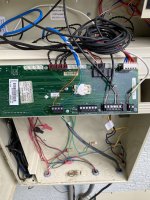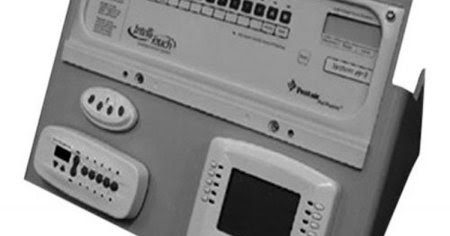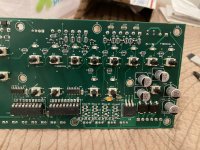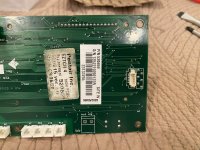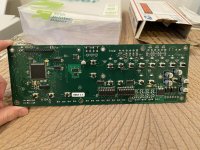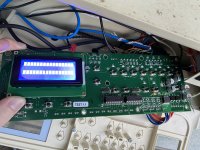Hey guys, I have a Pentair Easytouch 4 system that had a bad LCD display screen in it and wanted to replace it with a white on blue display (wh1604a-tmi-jt). The bad LCD display didn’t affect the board as I can still turn on the relay circuits and be able to switch between modes so it still functioned normally. I desoldered the original LCD display and soldered in the new one, and once I got the motherboard connected back together again and turned the circuit breaker back on in my house to power the EasyTouch transformer, the screen lights up but nothing appears on the screen. None of the buttons or anything else responds on the board. I checked my multimeter and I got 10/18/24 volts on the transformer plug so I know the transformer is still giving out the correct voltage to it. I even tried just powering on the board with nothing else connected to it and just have the transformer plugged in only and still doesn’t boot up. Even worse, I desoldered the new screen thinking it might’ve been the culprit and put the old screen back in and when I try powering it on with the old screen, it doesn’t boot up either. So now I’m stuck with an EasyTouch board that doesn’t want to boot up and function anymore. I also checked my soldering pin connections that go from the LCD display to the board, and I made sure there are no shorts and it looked fine to me. Again, the transformer plug is giving out the correct voltage from my multimeter and I made sure all of the wires and connectors for the relays and the valves were in the right spot before when it was working and just trying to test the board with just the transformer plug only and nothing else connected and it still wouldn’t boot up. Do you think I messed up my EasyTouch board completely and need to get a new one? I’m not sure how my soldering messed it up as I only just replaced the LCD screen with the pin headers so I was a little bit surprised that it could be it as I have seen people replaced their LED screens on their EasyTouch boards and it worked fine for them with no issues. I have included pictures of my problem, as well as my soldering when I install the new LCD screen. Thanks!


